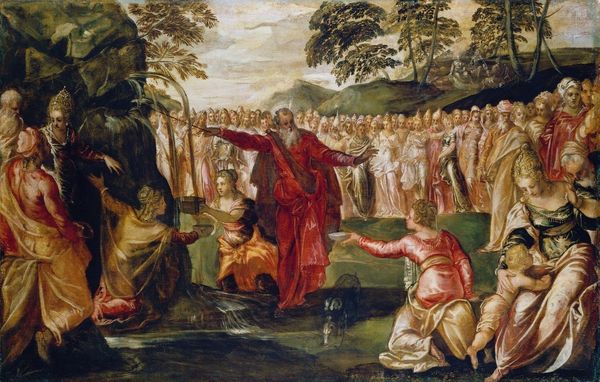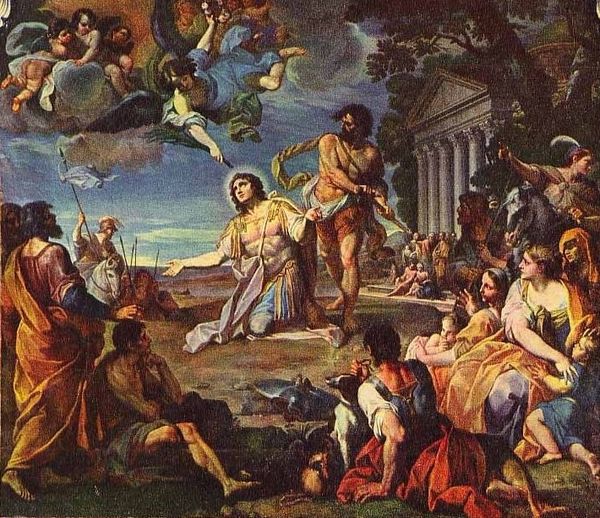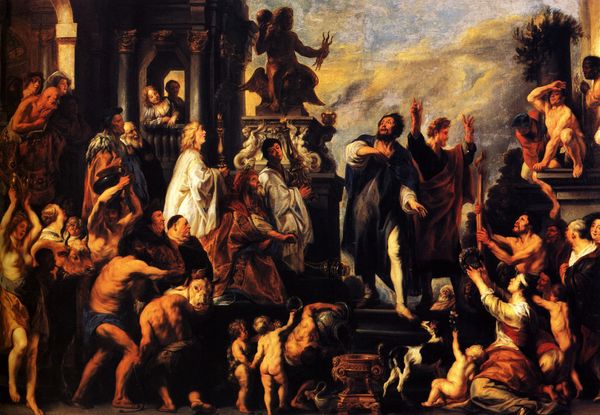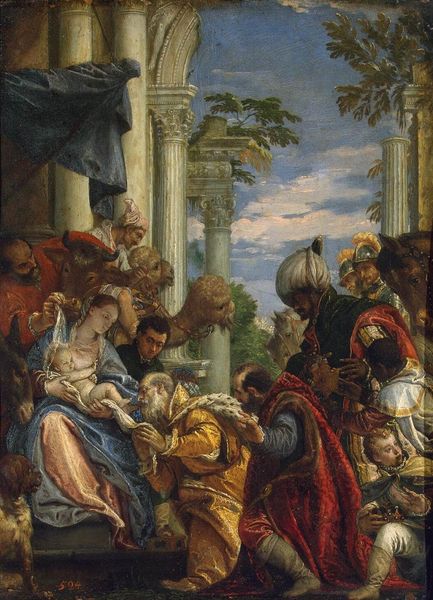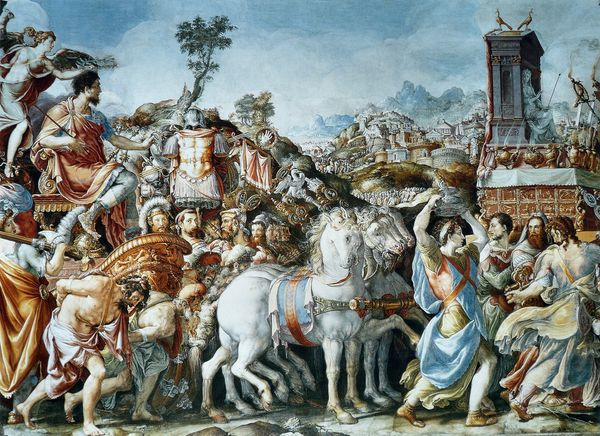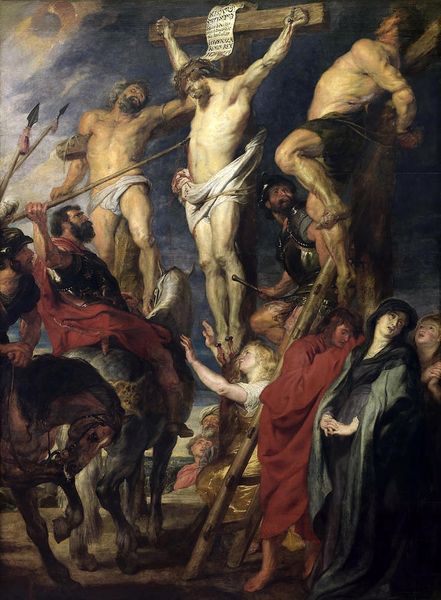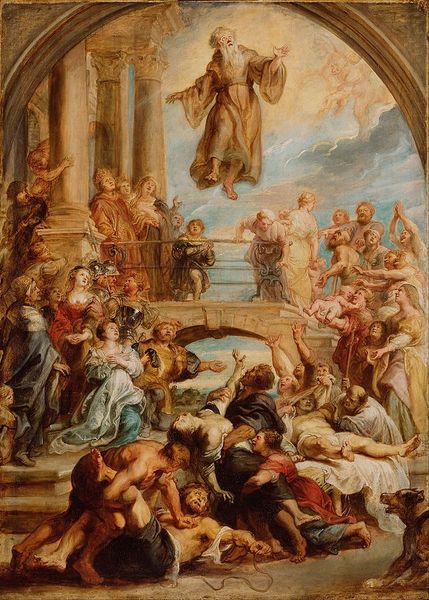
painting, oil-paint
#
narrative-art
#
baroque
#
painting
#
oil-paint
#
figuration
#
oil painting
#
history-painting
Copyright: Public domain
Curator: Immediately, I'm struck by the painting's dynamism. There's a sense of violent action contained within a surprisingly luminous and airy composition. Editor: That’s certainly true. What we’re looking at here is "The Stoning of St. Stephen," an oil on copper painting created around 1605 by the German artist Adam Elsheimer. The work is now held in the collection of the Scottish National Gallery in Edinburgh. Curator: It's a depiction of martyrdom. I'm drawn to the social dynamics represented, this potent mix of authority, rage, and religious fervor directed toward a single figure. You have a robed Saint Stephen down on his knees, a crowd throwing stones at him, all framed within architecture of religious institution—how does Elsheimer, consciously or unconsciously, engage with early Christian narratives? The people stoning St. Stephen, who were they, and who did they represent in 1605? Editor: And formally, Elsheimer's technique creates a compelling tension. Note the relatively small scale, characteristic of his cabinet pictures, juxtaposed with the vast, almost operatic, scene he portrays. The intense foreground drama contrasts sharply with the serene, almost classical landscape in the background and angels descending to deliver the crown of martyrdom. What does that tension do for us? Curator: This combination of brutality and divine grace creates an incredibly potent and somewhat disturbing visual. Consider how anxieties about religious persecution and political turmoil of the Baroque period influence this approach, how contemporary power structures impacted Elsheimer's creative decisions. Editor: I would argue that it enhances the overall emotional impact, that the contrast makes St. Stephen’s suffering feel paradoxically both intimate and universal. By positioning the stoning in an open, illuminated space, the artist makes the drama unfolding hyper visible. Light, especially its dramatic deployment, underscores the painting’s symbolic structure: the conflict between spiritual enlightenment and earthly cruelty. Curator: Indeed. Elsheimer's mastery lies in making the specific resonate so broadly. Looking at this from a modern intersectional lens, one starts to consider the relationship between power and sacrifice represented within various societal oppressions still unfolding today. Editor: A valuable point. The piece remains fascinating, its enduring relevance stemming from its formal brilliance as much as its subject matter. Curator: Absolutely, the historical context definitely allows one to better engage with and dissect the emotional narrative on view. Editor: Yes, in seeing both elements we start to see art's power in representing what's shared among us across all periods of history.
Comments
No comments
Be the first to comment and join the conversation on the ultimate creative platform.

